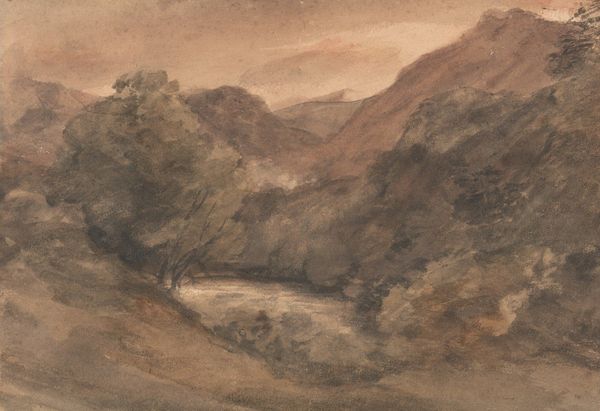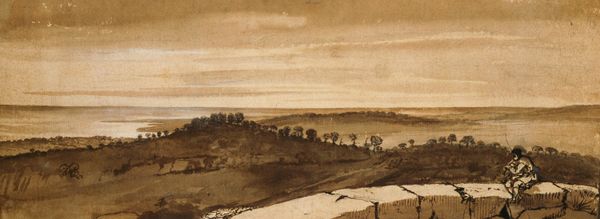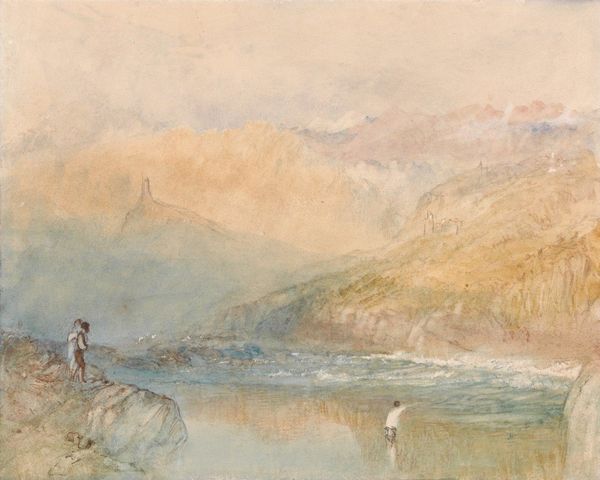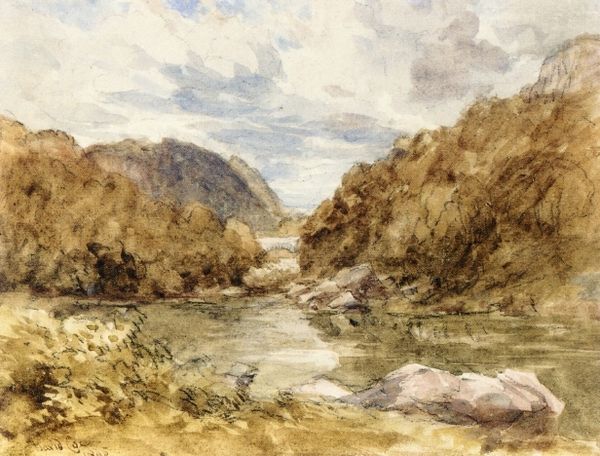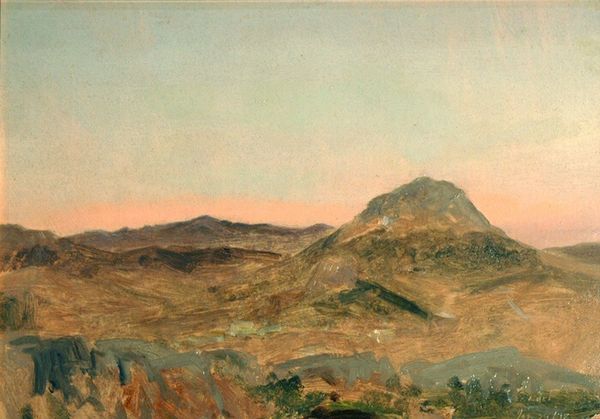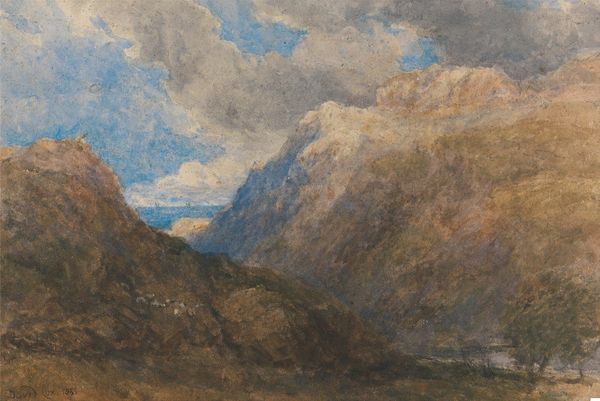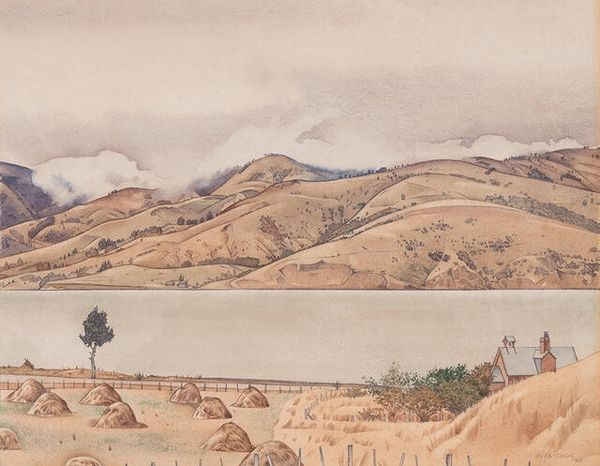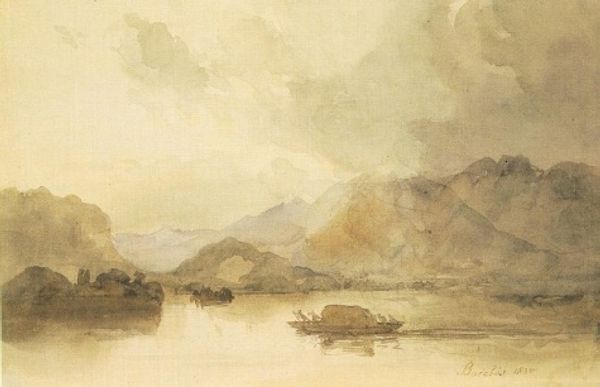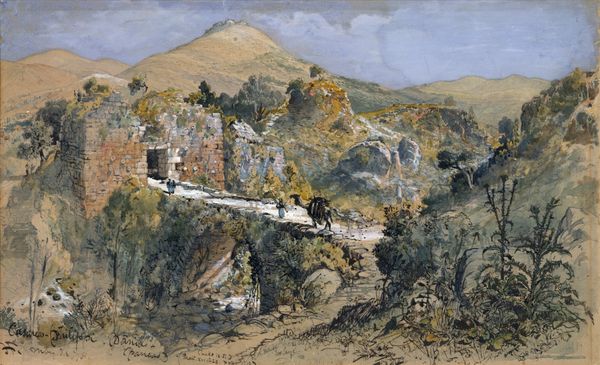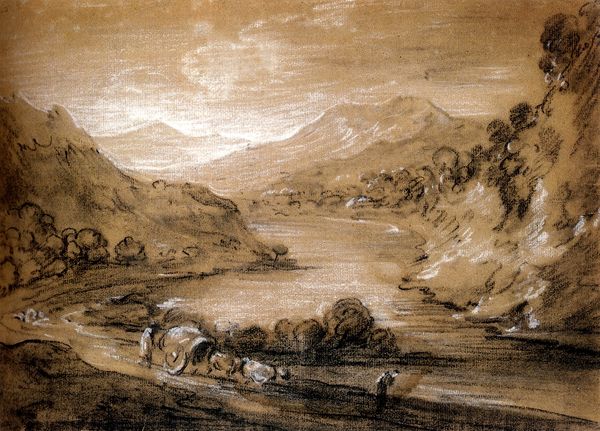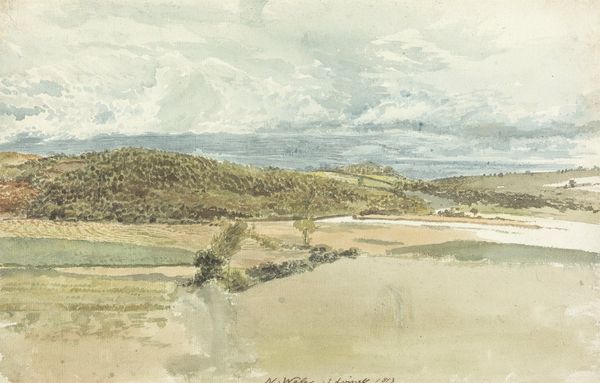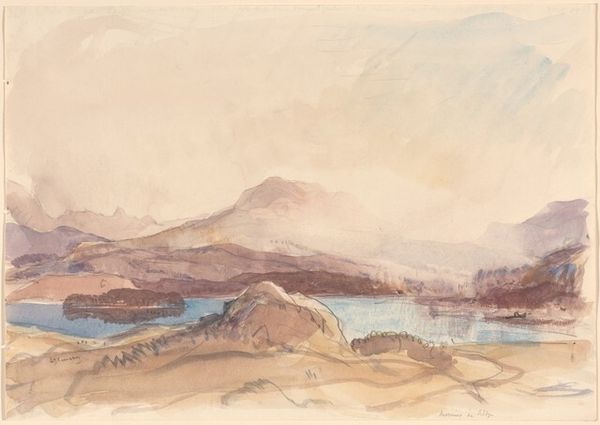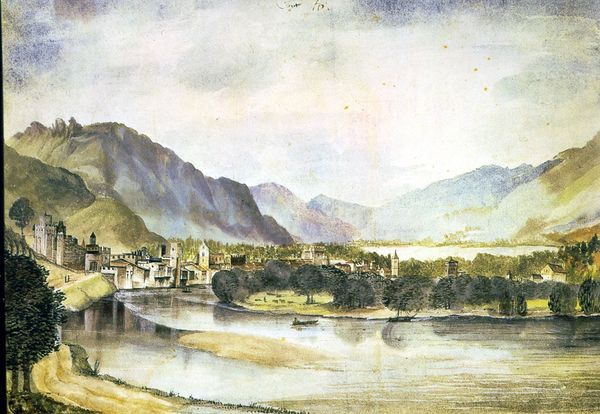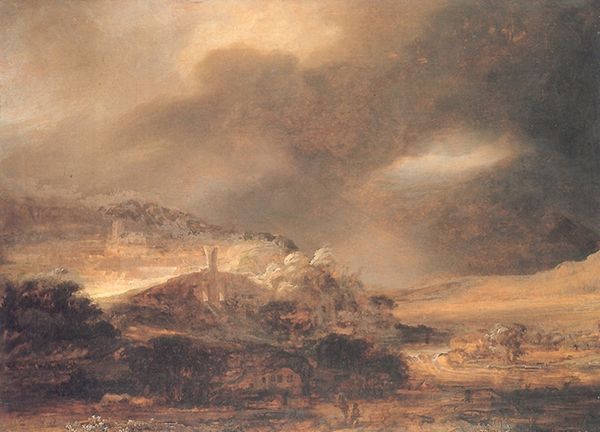
drawing, watercolor
#
drawing
#
landscape
#
charcoal drawing
#
watercolor
#
romanticism
#
line
#
watercolor
#
realism
Copyright: Public domain
Editor: Here we have “Near Bolton Abbey, Yorkshire” by Thomas Girtin, a watercolor and charcoal drawing. It strikes me as incredibly peaceful, the soft colors create a calming atmosphere. How do you interpret this work? Curator: It's a beautiful example of how landscape art isn't just about pretty scenery, but also about power dynamics. Girtin’s Romantic style naturalizes what was really an area impacted by early industrial change and agricultural restructuring. The abbey, though picturesque, represents the dissolving power of the church amidst rising secular authority. Editor: So the peaceful scene hides some pretty intense shifts in society? Curator: Precisely! Think about the historical moment – enclosure acts displacing rural populations, the rise of a market economy altering the relationship between people and land. What does the relatively small scale of the human figures suggest to you, juxtaposed with the dominating landscape? Editor: Maybe a sense of insignificance, like people are becoming less important than the land itself? Curator: Exactly. And whose land is it, really? Who profits from it? We have to ask ourselves who had the privilege to experience this as a place of leisure, and who faced displacement or hardship? It challenges us to reflect on how representations of landscape can both reflect and mask the socio-political realities. Editor: I never thought about landscape art in those terms, focusing on issues of power and privilege. It really opens up a new perspective. Curator: It’s crucial to connect art history with contemporary theory. Doing so helps us ask critical questions and unearth the narratives embedded within even the seemingly simplest images. It allows us to truly engage with art's complexities and implications.
Comments
No comments
Be the first to comment and join the conversation on the ultimate creative platform.
